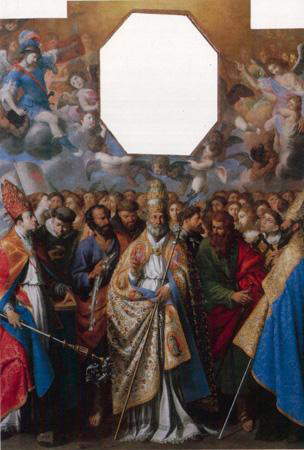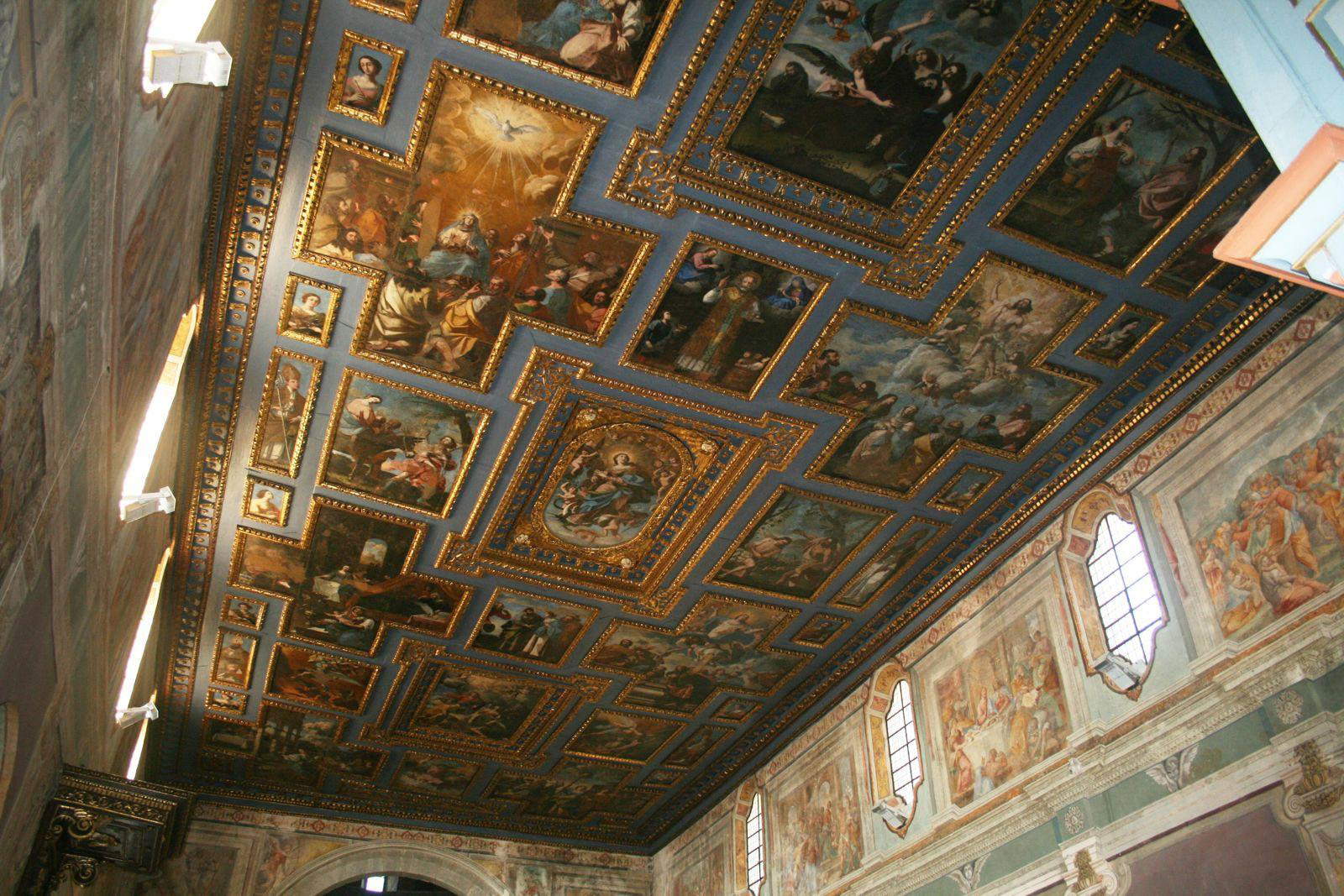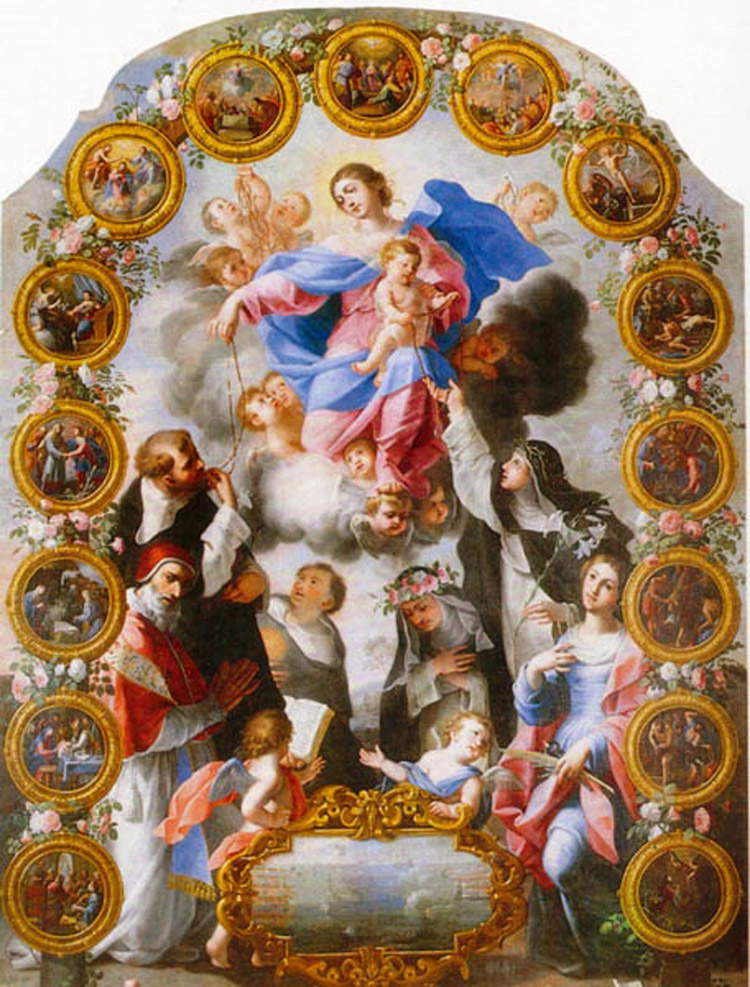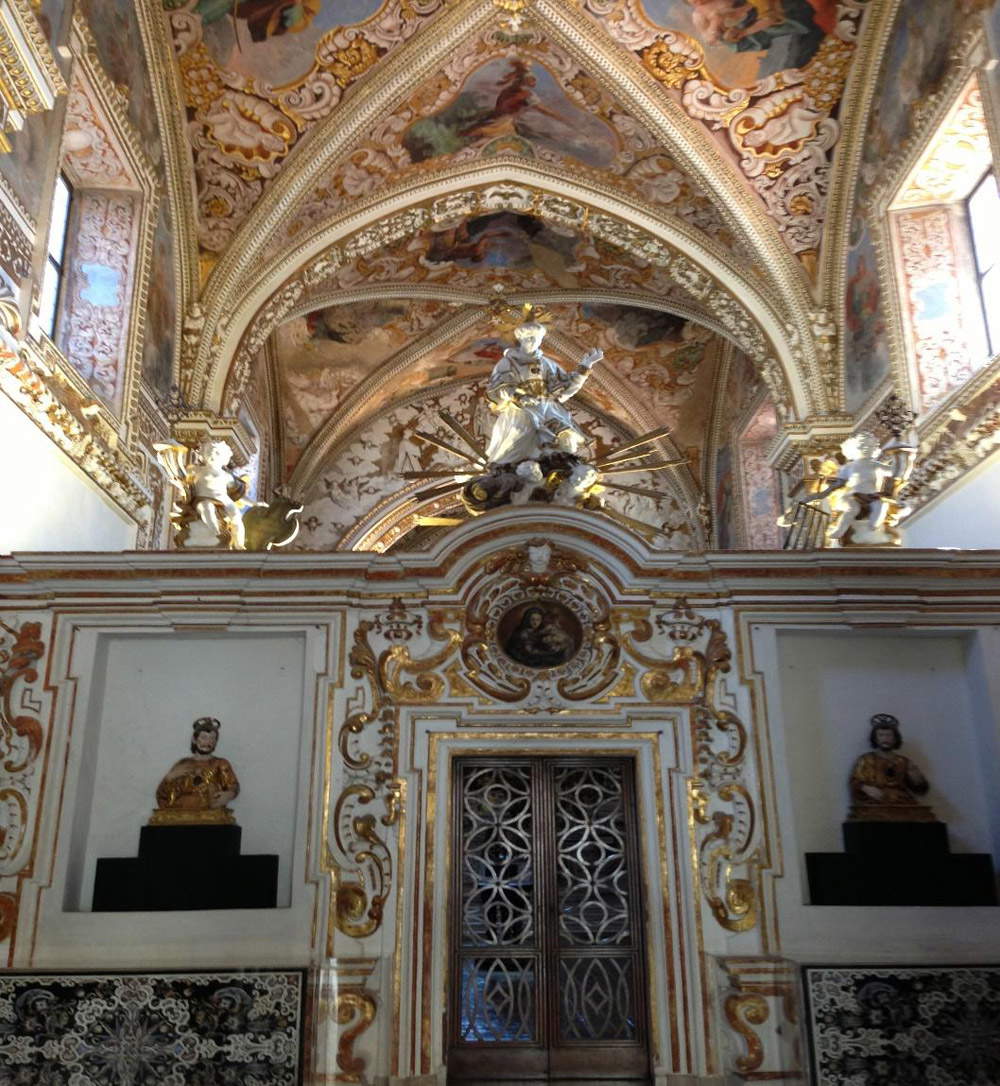By examining Michele Ragolia’s critical fortune, it was possible to reconstruct his artistic career, through a review of contributions, and to verify his contacts with Neapolitan and provincial patrons. Nineteenth-century historiography says little about the artist, but it is with the onset of the twentieth century that there is a growing need to reevaluate Neapolitan painting of the seventeenth and eighteenth centuries, initiating a new season of study.
The nineteenth-century biographer Bernardo De Dominici, who is our primary source, mentions the painter as one of Belisario Corenzio’s best disciples and provides useful information about his works executed in the Neapolitan church of San Diego allOspedaletto. Later scholar Raffello Causa adds more works and describes the artist as a latecomer adapting the last Mannerism to the new St. Stanzionesque, Guarinian and Fracanzanian culture, whose art tends to get lost in provincial production. As for his Sicilian origins and his apprenticeship in Naples at Corenzio, they are also confirmed by the eighteenth-century Sicilian biographer Francesco Maria Emanuele Gaetani, marquis of Villabianca. Giuseppe Ceci also contributed to the definition of his biographical profile, giving confirmation of the artist’s enrollment in the guild of painters in 1665 and the date of his death as May 21, 1686.
Riccardo Filangieri and Giovan Battista DAddosio were interested in the different meanings of the artist’s surname found in Thieme and Becker’s Künstlerlexicon, in which various spellings of the artist’s surname are recorded: Ragonia, Regolia, Raglia, Reglia, Rigoglia. But the diction Ragolia is to be considered the most accurate since this is how the painter signed himself and this surname is present in most of the records. Based on the evidence provided by historical documents, it has been possible to trace the biographical stages of the artist, but the year of his birth currently still remains a mystery, although 3 possible dates have been hypothesized: first decade of the 1600s; 1625 (Jeff Matthews); 1638 (Alvar González-Palacios).
Given the gaps about his youth, for a view of Ragolia’s artistic beginnings we must rely on the Dedominican opinion that asserts an influence of his master Corentius in his early works and an openness to the new Caravaggesque movement in his later ones. Unlike his preceptor, Ragolia treats solid forms in a grazing light and uses a realism antithetical to Corenzio’s abstract decorativism, thus showing an early departure from his master’s mannerism. At the same time he certainly learned the delicacy and vividness in coloring of the master, peculiarities that remained constant in his production. It is also possible to discern in the painter’s art the repercussions of the decorativism of Pietro da Cortona and Giovanni Lanfranco, but although the artist almost immediately detached himself from the late Mannerist culture and opened himself up to the new suggestions of classicism and Caravaggio’s naturalism coming from Massimo Stanzione, nevertheless influences of Francesco Guarino, Pacecco De Rosa and Cesare Fracanzano can be discerned. Later, an opening toward the colorism of Federico Barocci and the pictoricism of Luca Giordano can also be seen.
 |
| Michele Ragolia, St. Peter surrounded by saints (1652; Bomerano di Agerola, Church of All Saints) |
Ragolia manifests great mastery in the use of pictorial material, rendering the flesh tones of the saints clean and glazed and achieving chromatic brilliance in the juxtaposition of the blues, greens, and reds used for the robes. The material is thickened and enriched with pigment in the copes and ornaments, which are treated with a relief effect. The faces of the martyrs behind St. Peter and the young women with soft hairstyles glimpsed in the crowd recall the elegance of the goddesses in Pacecco de Rosa’s Judgment of Paris.
Ragolia’s greatest achievement is in the cycle of 40 canvases included in the wooden ceiling of the church of SantAntonio in Polla, signed and dated 1666. These paintings depict Stories from the Old and New Testaments and can be considered a tribute to the eclectic and sometimes monumental painting of the St. Antonios, with narrative inflections that are still late Mannerist. As he was now a painter in full artistic maturity, he demonstrated with this masterpiece that he had fine-tuned the main aspects of his figurative vision and culture.
 |
| Michele Ragolia, Stories from the Old and New Testaments (1666; Polla, Sant’Antonio) |
In the paintings, the modes and types of his more youthful works are repeated, but there also emerges a painting that conforms to the pictorialism of Cesare Fracanzano. In some canvases the language of Angelo Solimena can be seen, evident in the softening of Guarini’s. Observing the ceiling canvases, one notices that Neapolitan painting emerges precisely through the subjects and especially through the way the artist depicted them: the strong chiaroscuro contrast harks back to Caravaggesque influences, while the broad and luminous construction of the cruciform paintings descends from the decorative criteria of Giovanni Lanfranco.
Although all the information in our possession links Ragolia to the Neapolitan environment, the paintings of SantAntonio offer some elements of contact with the painters of his island mediated by Monrealese. However, the artistic qualities emerge from the compositional grandeur felt in the large cruciform canvases, the magnificence of the scenes characterized by splendid backgrounds, and the predilection for vivid color.
The artistic grandeur achieved in the Pollese paintings allowed him the subsequent commission of no less than twenty-one canvases for the ceiling of the parish church of Santa Lucia near Cava de Tirreni, depicting the stories of the saint. In the instrument of the notary Aniello Siani, where Ragolia’s signature is present, we learn that on March 3, 1681, the painter had painted only three paintings, so the church masters entered into an agreement with the artist, who undertook to provide 18 paintings by the following year, with the payment of 230 ducats.
This documentary indication positively intervenes to clarify one of the passages of the late phase of the artist, regarding his activity at Cava de Tirreni, where, in 1683, he would create a cycle of fifteen canvases, depicting the Stories of St. Francis, for the ceiling of the nave of the basilica of Santa Maria dellOlmo, commissioned by the Minim Fathers.
 |
| Michele Ragolia, Stories of St. Francis (1683; Cava de’ Tirreni, Basilica of Santa Maria dell’Olmo) |
Another work that goes to enrich the painter’s artistic production is the Madonna of the Rosary, preserved in the monumental church of St. Matthew the Apostle in Bomerano, in which the artist qualifies aspanormitanusand whose dating, 1682, hypothesized following the recent restoration, has been questioned by Dr. Mario Alberto Pavone, as it presents considerable stylistic affinities with the 1652 altarpiece in the church of All Saints in Bomerano resulting chronologically too distant.
The last work attributed to Ragolia is the fresco decoration of the 14th-century vault of the Carthusian monastery church of San Lorenzo di Padula, completed before his death in 1686. These frescoes delineate the evolutionary culmination of the painter’s style, in which the total detachment from the influences of his master can be felt. The vault sails depict scenes with episodes and characters from the Old and New Testaments, and during the season of major restorations, which began after the 1980 earthquake, it was possible to recover the typical features of the Sicilian painter, as can be seen in the elongated forms of the afflicted prophets, the feathered warriors, and the delicate mulieval models.
 |
| Michele Ragolia, Madonna of the Rosary (ca. 1652; Bomerano di Agerola, St. Matthew the Apostle) |
 |
| Michele Ragolia, Scenes and Characters from the Old and New Testaments (1683-1686; Padula, Certosa di San Lorenzo) |
Influences from contemporaries Andrea de Lione and Agostino Beltrano are discernible in the frescoes, as well as those already proven by Massimo Stanzione and Belisario Corenzio. The figures of the Apostles highlight theinfluence of those painted by Giovanni Lanfranco along the walls of the Carthusian monastery of San Martino.
While Michele Ragolia’s achievements represent the continuation of a tendency that is still late Mannerist in style, they reveal their limitations when compared with the results he has matured in the area of fresco decoration. His works demonstrate a profound knowledge of religious iconography, so much so that he conveys strong emotion through the facial expressions of his figures.
As we have seen, Michele Ragolia was formed first through the assimilation of Caravaggesque and Stantonesque motifs and then through the experiences of the Master of the Announcements to the Shepherds and the Group of Wisdom in the decade 1635-1645 in which there was a shift in Caravaggesque forms toward a delicate and refined pictoricism. He remained faithful to the experience of this period until almost the end of the century, as this was evidently a choice that fully satisfied him and responded to his pictorial, spiritual and human sensibility. Generally, except for lattention to the Baroque, which is well evident in other of his canvases now preserved in Vienna, he quietly welcomed the suggestions of the Baroque Luca Giordano and Pietro da Cortona, diluting their style in his own.
Despite the competition of the excellent artists who came to prominence during the Neapolitan seventeenth century, Michele Ragolia deserves outstanding artistic recognition, whose passion and limpidity gave rise to true masterpieces.
Warning: the translation into English of the original Italian article was created using automatic tools. We undertake to review all articles, but we do not guarantee the total absence of inaccuracies in the translation due to the program. You can find the original by clicking on the ITA button. If you find any mistake,please contact us.